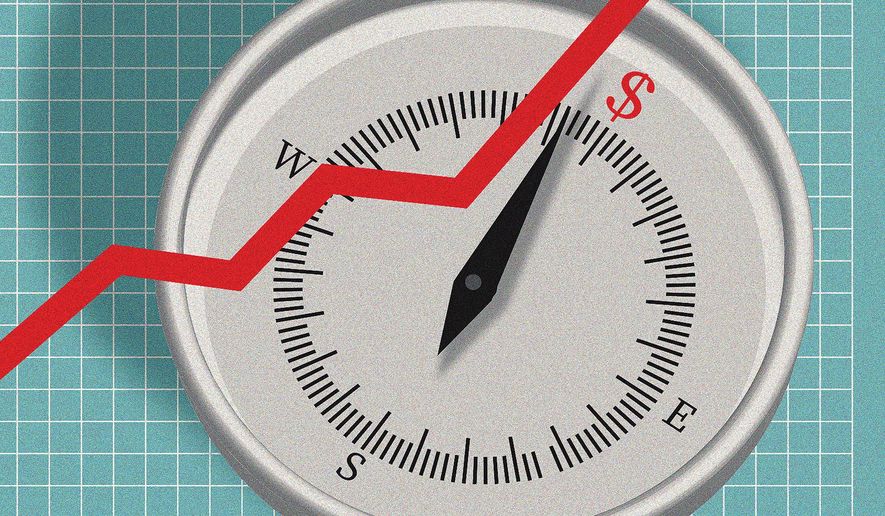OPINION:
The news on inflation has been good lately, but the Federal Reserve should resist the temptation to reduce interest rates prematurely.
The economy has recovered well from COVID: Fourth-quarter gross domestic product is about where economists expected it to be in early 2020 had the pandemic not occurred.
Adult labor force participation has rebounded somewhat. It stood at 63.3% just before COVID and 62.5% in December. We could use the 2.1 million additional workers, but the population is aging, and women face notable difficulty with the return to the office.
The ratio of job openings to job-seekers is about 1.4, and the continuing changes in the economy — consumers buying more goods during pandemic shutdowns and then swinging back to services afterward — have exacerbated labor shortages.
Reflecting those structural changes, an analysis by former Fed Chairman Ben Bernanke and economist Olivier Blanchard indicates that ratio would have to fall below 1 to sustain inflation at 2%.
The consumer price index is up about 3% from a year ago, which is a lot better than the 9.1% in June 2022. On a month-to-month basis, it was well below the Fed’s 2% target.
Much of that progress was accomplished through deflation in goods-producing industries. China’s economic troubles, a cheaper yuan against the dollar and the depressed state of the oil market helped push down U.S. import prices.
China’s economic problems don’t mirror Japan’s lost decade. Its real estate sector can be rescued, as ours was after the global financial crisis of 2007-2009, by Beijing increasing the liquidity available through its banking system. With China’s economy suffering a bout of deflation, that makes some sense.
China has fundamental strengths in electric vehicles, battery technology, green energy and other Industries that make products Western economies and fast-growing Asian nations need. It will recover from its balance sheet recession, and the yuan will stabilize.
As Europe pulls out of its latest funk and imports more, prices for manufactured goods purchased from the Middle Kingdom and gasoline will rise again.
Core inflation, which strips out the volatile food and energy sectors, was still above 3.5% on a year-on-year basis in December.
The labor market is no longer red hot but as noted, it remains tight. Wage pressures and other capacity constraints are most influential in the services sector, where inflation, less energy, still scores about 5%.
Shelter — which includes estimates of the rents that owner-occupied houses could fetch and rental homes and apartment leases — accounts for 35% of the CPI and an even larger share of the index for core services.
And private sector surveys indicate rents on apartments are falling.
Most rental home and apartment leases adjust rent on an annual basis and some less frequently.
Consequently, falling rents on new leases show up in the CPI with a lag — causing some analysts to anticipate a big drag on the CPI in 2024.
But those private rental indexes dropped a great deal from August 2022 to January 2023 without driving down the cost of shelter in the CPI in the following months.
Simply, most housing in American is owned, not rented. Housing prices rebounded in 2023 and drove up the imputed rent on owner-occupied housing — that component is 73% of the shelter component in the CPI.
Construction costs for houses and apartments are importantly driven by ever tighter local building regulations, which lengthen construction time, zoning issues, and labor and material shortages when housing construction goes through its periodic surges.
Economists anticipate economic growth will slow but not collapse into a recession in 2024, and recent sunny reports on inflation have markets and analysts anticipating the Fed will cut interest rates. Indeed, in its most recent projections, the Fed penciled in the equivalent of three one-quarter-point reductions in the overnight bank lending rate for 2024.
Cutting rates too soon and too much would be a mistake. Monetary policy is already becoming laxer.
Since October, the 10-year Treasury rate, which heavily influences interest rates charged for mortgages and other credit, has fallen from about 5% to about 4%. This occurred because Treasury borrowing needs pulled back in the fourth quarter, and bond markets increasingly anticipated the Fed will cut short-term rates next year.
An International Monetary Fund study of over 100 inflation episodes across 56 countries since the 1970s found that inflation was brought down to desired levels over five years in only 60% of cases. The biggest problem was premature celebrations — central banks cutting rates too soon.
Central banks had more success when they stayed the course longer. Those situations were associated with more short-term pain, but GDP, employment and wages recovered nicely over a five-year horizon.
The economy is likely to prosper better if the Fed finishes the job by pushing core inflation to 2% before further pushing down interest rates.
• Peter Morici is an economist and emeritus business professor at the University of Maryland, and a national columnist.




Please read our comment policy before commenting.